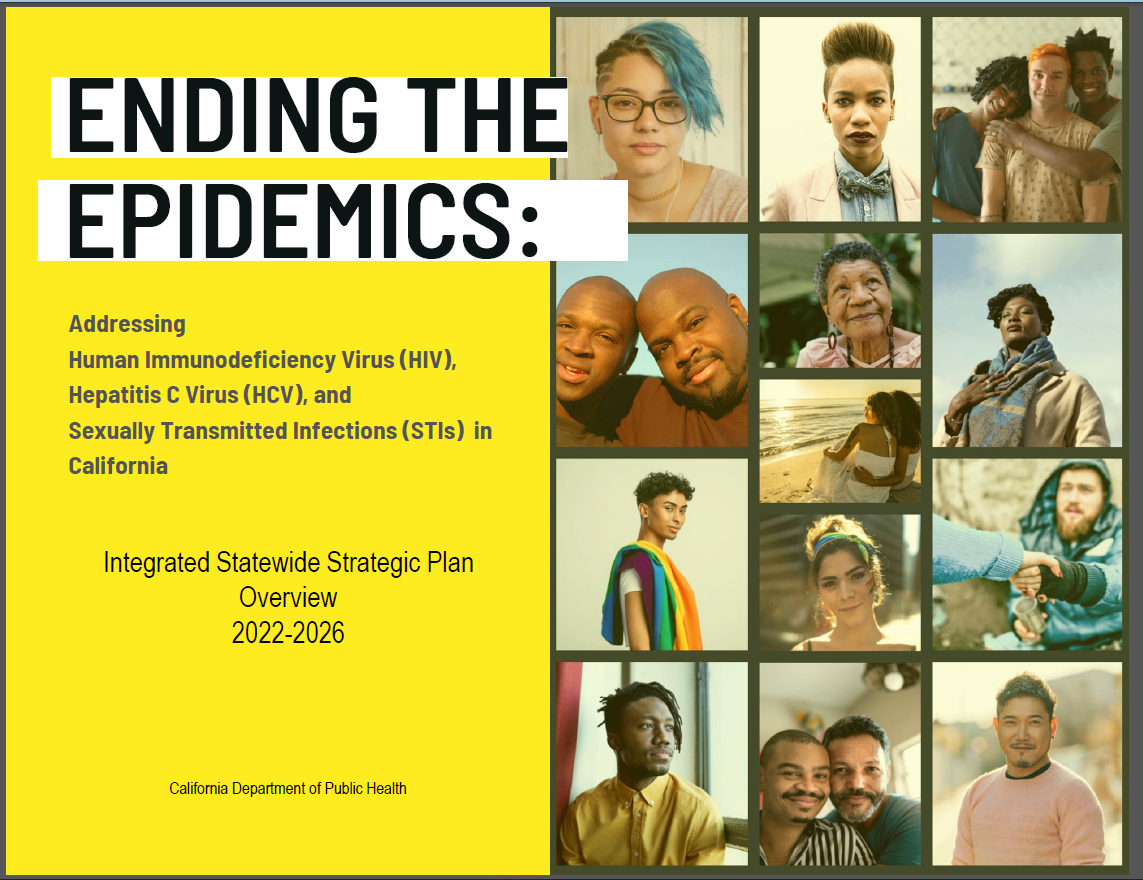Syndemics result when multiple health conditions overlap and exacerbate one another due to shared underlying social factors. In early 2021, to address California’s syndemic of HIV, hepatitis C, and STIs, the California Department of Public Health (CDPH) Office of AIDS and the CDPH STD Control Branch joined together to develop a high-level, high-impact, five-year strategic plan. These groups wanted to balance the requirements for a CDC/HRSA Integrated HIV Plan, a Statewide Hepatitis C Elimination Plan, and a Congenital Syphilis Elimination Plan with the reality that these diseases coexist and affect Californians in overlapping ways. Ultimately, the group decided that to best enhance their work to end HIV, hepatitis C, and STIs, they needed to focus on those Californians least reached by ongoing public health efforts, requiring a single strategic plan that addressed these issues through the lens of social determinants of health.
To create the high-level plan, Facente Consulting convened a workgroup of 25 people from CDPH, statewide organizations, and other stakeholder groups, to meet weekly for 13 weeks. The workgroup collaborated to ultimately develop a list of 30 strategies across six categories: racial equity, housing first, health access for all, mental health and substance use, economic justice, and a need to be stigma-free. Once the plan was released, Facente Consulting embarked upon a “road show,” holding in-person meetings in 16 California cities in May and June 2022, supplementing these meetings with five virtual input sessions and a statewide electronic survey. The information collected through these efforts was used to develop a realistic, actionable blueprint for implementation of the 30 high-level strategies throughout California from 2022-2026.

